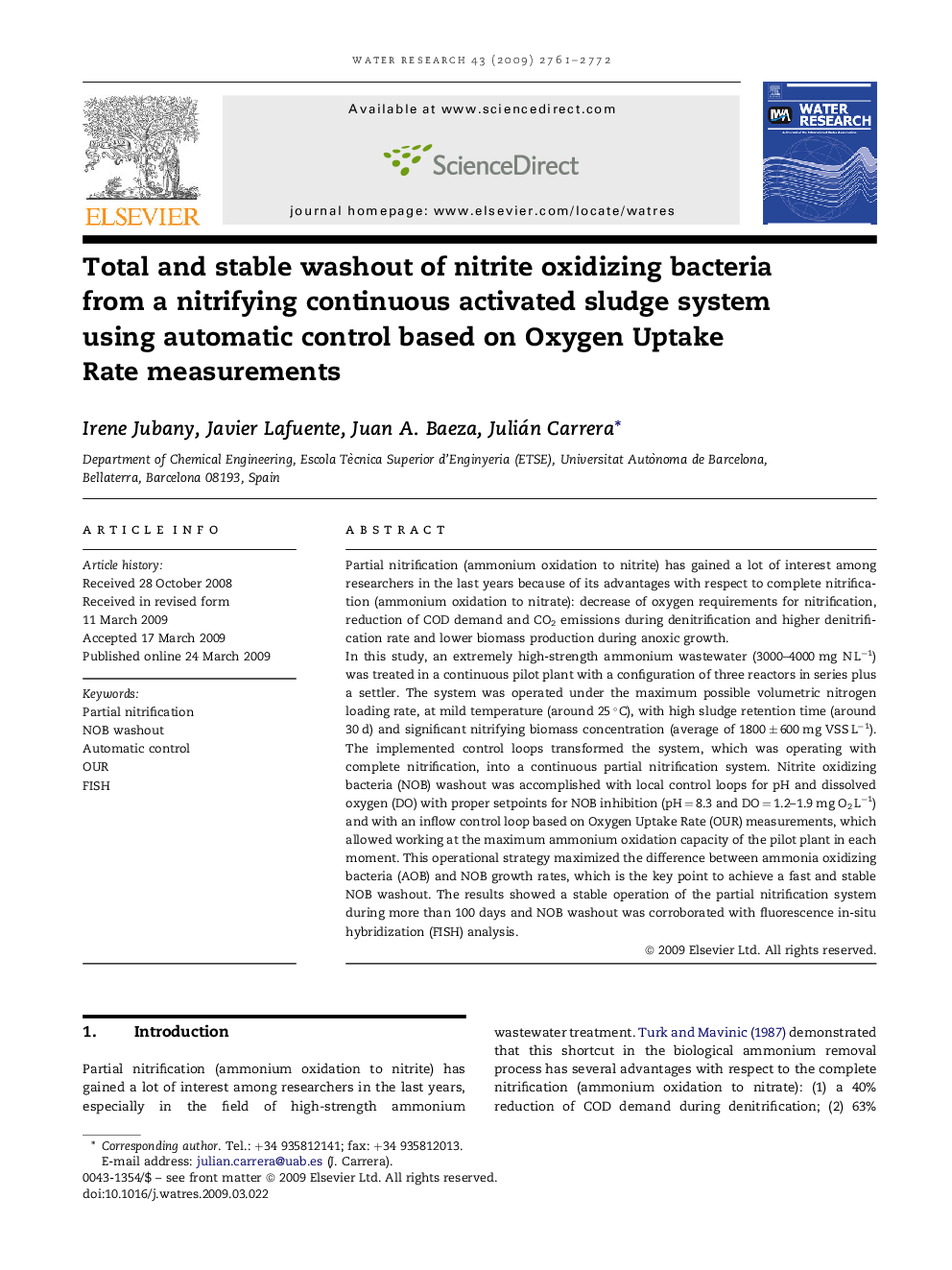| Article ID | Journal | Published Year | Pages | File Type |
|---|---|---|---|---|
| 4484646 | Water Research | 2009 | 12 Pages |
Partial nitrification (ammonium oxidation to nitrite) has gained a lot of interest among researchers in the last years because of its advantages with respect to complete nitrification (ammonium oxidation to nitrate): decrease of oxygen requirements for nitrification, reduction of COD demand and CO2 emissions during denitrification and higher denitrification rate and lower biomass production during anoxic growth.In this study, an extremely high-strength ammonium wastewater (3000–4000 mg N L−1) was treated in a continuous pilot plant with a configuration of three reactors in series plus a settler. The system was operated under the maximum possible volumetric nitrogen loading rate, at mild temperature (around 25 °C), with high sludge retention time (around 30 d) and significant nitrifying biomass concentration (average of 1800 ± 600 mg VSS L−1). The implemented control loops transformed the system, which was operating with complete nitrification, into a continuous partial nitrification system. Nitrite oxidizing bacteria (NOB) washout was accomplished with local control loops for pH and dissolved oxygen (DO) with proper setpoints for NOB inhibition (pH = 8.3 and DO = 1.2–1.9 mg O2 L−1) and with an inflow control loop based on Oxygen Uptake Rate (OUR) measurements, which allowed working at the maximum ammonium oxidation capacity of the pilot plant in each moment. This operational strategy maximized the difference between ammonia oxidizing bacteria (AOB) and NOB growth rates, which is the key point to achieve a fast and stable NOB washout. The results showed a stable operation of the partial nitrification system during more than 100 days and NOB washout was corroborated with fluorescence in-situ hybridization (FISH) analysis.
